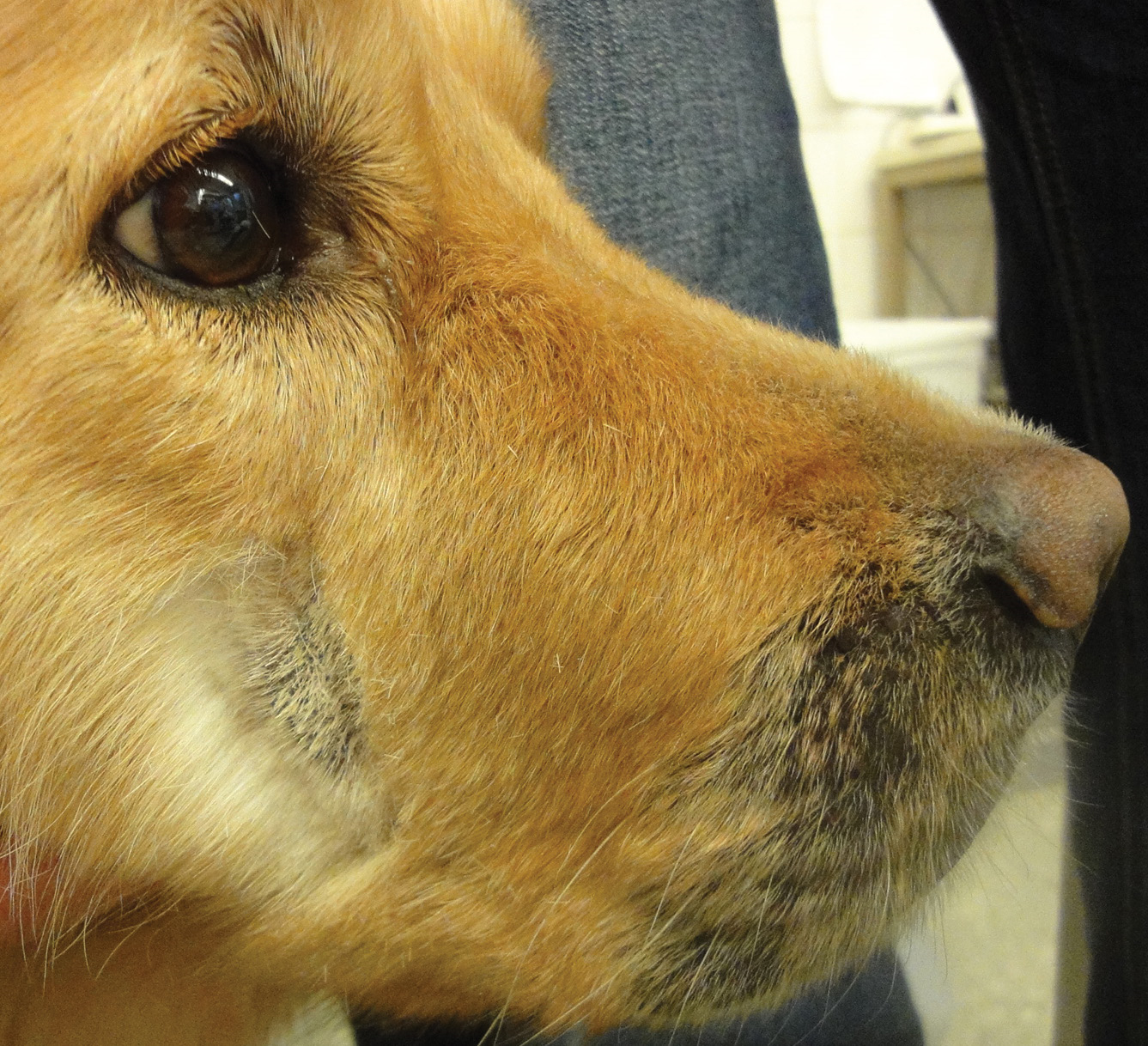Canine Infectious Diseases: Self-Assessment Color Review, Q&A 15
Jump to navigation
Jump to search
| This question was provided by CRC Press. See more case-based flashcards |

|
Student tip: This case is an example using a good image and associated questions. |
A 6-month-old intact female Golden Retriever was evaluated for two focal regions of hypotrichosis on the muzzle (see image) of several weeks’ duration. The dog was otherwise well, had a good appetite, and was not pruritic. The dog had been regularly vaccinated with core vaccines and was regularly treated for endoparasites. She lived in Munich, Germany, and had never been outside the country. On physical examination, the only pathologic findings were the lesions described. The affected skin was not erythematous, but was slightly thicker than in adjacent areas and hyperpigmented.
| Question | Answer | Article | |
| What are your differential diagnoses? | The main differential diagnoses for diseases causing hair loss are follicular diseases, and in a young dog, infectious folliculitides are the most likely. Thus, bacterial folliculitis, demodicosis, and dermatophytosis are all on the top of the list.
|
Link to Article | |
| What tests would you propose? | Deep skin scrapings or trichograms to rule out demodicosis and an impression smear to identify evidence of bacterial pyoderma are the most important initial tests. If the scrapings or trichograms are negative and no or very few extracellular bacteria are seen on cytology, a Wood’s lamp examination should be performed. Positive fluorescence along the hair shafts is diagnostic for a dermatophytosis caused by Microsporum canis. A negative result should be followed by fungal culture and/or PCR for dermatophytes.
|
Link to Article | |
To purchase the full text with your 20% discount, go to the CRC Press Veterinary website and use code VET18.
